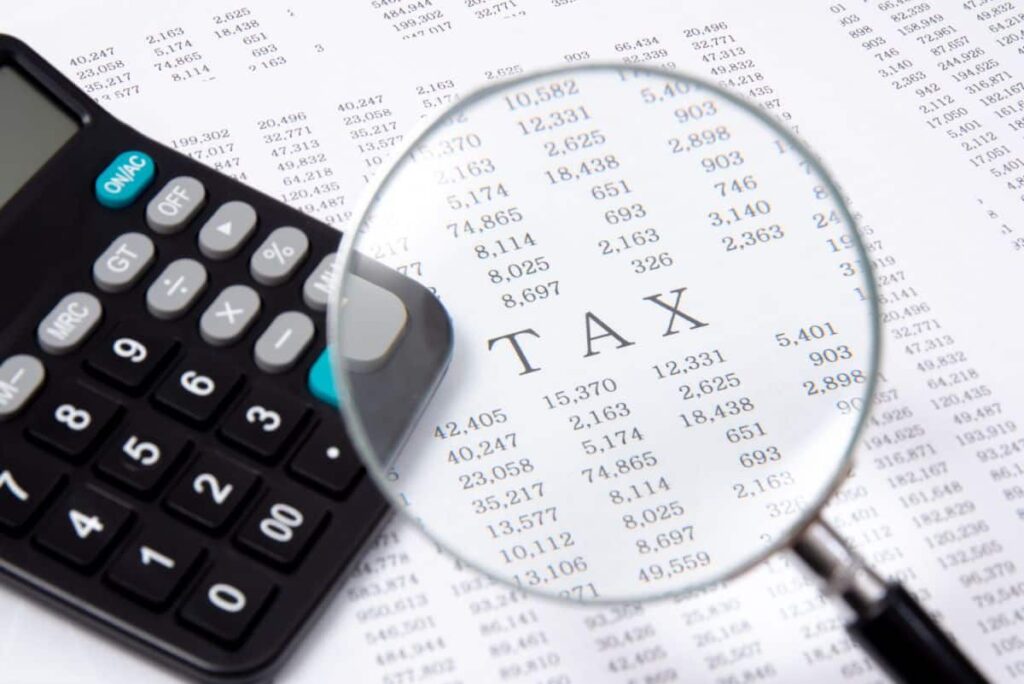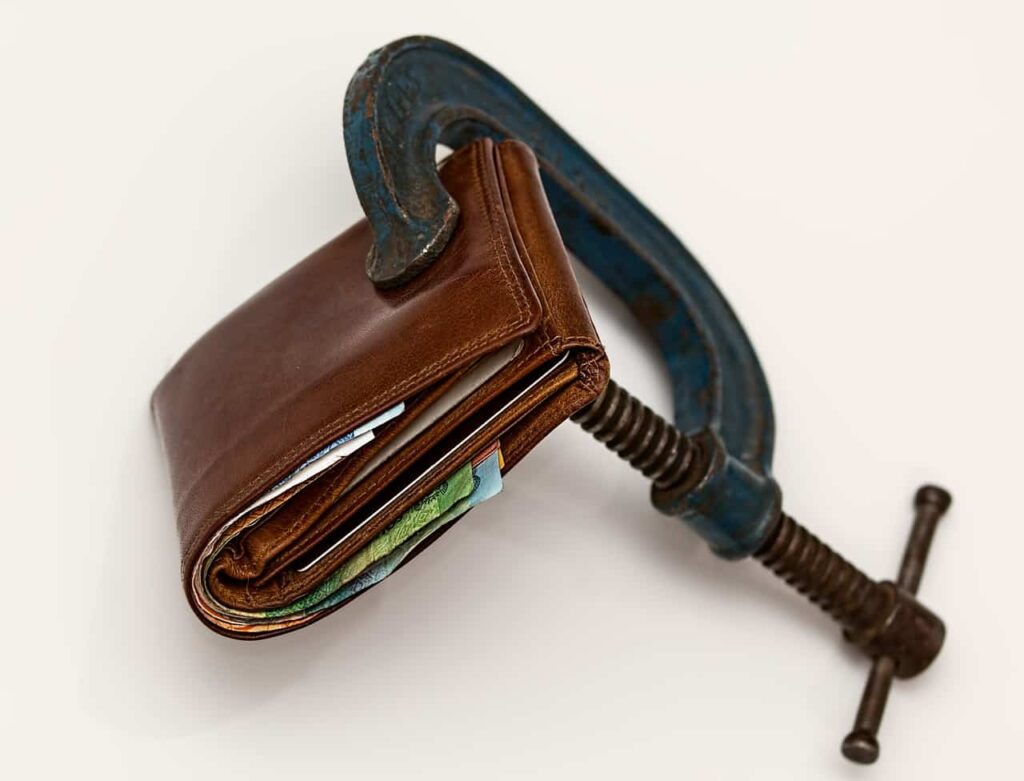Tax Planning Tips: Superannuation
Do you feel like you don’t have enough control over your retirement savings options? Do you have a plan to maximize the value of your contributions and ensure that you obtain the most advantageous benefits when you reach retirement age? The following are some suggestions that will assist you in getting started. Keep in mind that everyone’s circumstances are unique, which is why it is essential to discuss your options with a certified public accountant or a financial advisor in order to develop a strategy that is tailored to your specific needs. Continue reading for some pointers that will perhaps serve as a solid foundation for you.
When it comes to retirement planning, superannuation is an essential component; however, it can be difficult to determine how to maximize its benefits. You may reduce your overall tax burden and make the most of your retirement savings by putting these tax planning strategies to work for you. You can save a significant amount of money in taxes by engaging in some strategic preparation beforehand.
When most individuals think about tax planning, the first thing that comes to their mind is finding ways to cut down on the amount of income that is subject to taxation. It is essential to keep an open mind to various alternatives, such as superannuation, even though there are a lot of efficient methods available for achieving this goal. Here are some suggestions for getting the most out of your retirement savings to cut down on your overall tax liability.
How to Make the Most of Your Pension and Other Retirement Benefits
When you begin to make preparations for the end of the fiscal year, one of the most essential questions you should ask yourself is whether or not you are making the most of your superannuation and the potential tax benefits it offers. You can begin to maximize your superannuation balance right now while also benefiting from potential tax savings, which may be available to you. For some people, retirement may appear to be a faraway prospect.
In the following paragraphs, we will discuss in-depth the various ways in which you might be able to add money to your superannuation fund, as well as the most recent tax planning tactics that are now on the market. However, everyone’s circumstances are different, and we always recommend speaking to a superannuation professional or a trusted business adviser to learn what will work for you and provide an opportunity to help decrease your tax for the year ending 30 June 2021.
Varieties of Contributions

Concessional contributions are member payments put into your superannuation fund before the money has been taxed. Concessional contributions to the fund are eligible for a tax rate that is currently set at 15 percent, which is much less than the highest tax rate that can be imposed as a marginal tax rate on individuals (currently 47 percent ). These payments could include company contributions, such as a super guarantee or salary sacrifice, as well as personal contributions, for which you have the option to claim a tax deduction.
Contributions to your superannuation fund that are contributed after-tax are known as non-concessional contributions. The term is most typically used to apply to personal contributions for which an income tax deduction is not claimed. These distributions are exempt from taxation in your fund altogether.
You should keep in mind that there are caps placed on the total amount of money that can be contributed to your superannuation fund on an annual basis, even though there is more than one way to put money into your retirement account. These annual contribution caps establish the maximum amounts that can be contributed based on criteria, including your age and when the payments are deposited. Next, we will go over the various contributions, followed by a discussion of the contribution caps that apply to each.
Concessional Contributions
Individuals who are younger than 65 years of age are eligible to make concessional contributions up to a maximum of $25,000. This limit applies to the current fiscal year. However, if you are between 65 and 75, before obtaining the maximum ceiling, you must fulfil the ‘work test‘, which is equal to 40 hours worked during 30 consecutive days. In the event that this condition is not satisfied, you will only be eligible for mandated payments, such as the superannuation guarantee amounts required of employers.
You need to make sure that any personal contributions you make to a super fund are paid in full and acknowledged by the fund by the 30th of June in order for those payments to be eligible for a tax deduction for the current fiscal year.
By accepting a “Notice of Intent to Claim a Deduction” form, your superannuation fund will provide formal acknowledgment of the personal contributions that are intended to be claimed as a tax deduction. Before you may submit your tax return for the appropriate fiscal year, the fund must first send you an acknowledgment letter. This letter is required before you can do so.
It is important to remember that if the sum of your income plus any concessional contributions you made in this year’s tax year is greater than $250,000, you may be required to pay an additional tax under Division 293, which is equivalent to 15% of the amount of concessional contributions you made. When a request is made through the ATO, you have the option of paying this tax personally or having it taken immediately from your superannuation fund.
Exceeding the Concessional Cap
When it comes to concessional payments, having more money available may not always be desirable as doing so may result in higher taxes being owed.
Amounts paid in excess of the cap will be included in your personal taxable income for the year and taxed at your marginal tax rate, less a tax offset in the amount of 15 percent for tax that has already been paid on the contributions in your fund.
If contributions are paid in excess of the cap, you will additionally be responsible for the excess concessional contribution (ECC) fee. This charge is currently imposed at a rate of 3.02 percent to the additional income tax burden that has arisen as a result of the excess payments (current as at March 2021).
Non-Concessional Contributions
The maximum amount that can be contributed to non-concessional accounts on an annual basis is presently set at $100,000; however, this amount is subject to change based on factors such as your age and the amount that you already have in superannuation.
You might be able to take advantage of the three-year bring-forward rule if you are younger than 65 years old. Because of this, you would be able to contribute up to $300,000 in a single year by making use of the non-concessional contribution caps that are available for the current year as well as the next two years.
On the other hand, if your entire superannuation balance is close to $1.6 million, you might not be able to make any tax-free contributions since your yearly cap will be judged to be zero. In this case, you won’t be able to contribute tax-free money.
Exceeding the Non-Concessional Cap
If you ever reach the point where your non-concessional contribution limit has been exceeded, the ATO will send you a determination letter outlining the various ways in which you can settle the remaining debt.
You have the choice to either leave any excess contributions in your superannuation fund, which will then be subject to income tax on the amount of the excess contribution at the highest marginal rate (which is currently 47 percent), or you can choose to withdraw the excess contributions, in which case you will also be required to withdraw 85 percent of the earnings associated with those contributions.
According to the calculations done by the ATO, the linked profits represent the revenue that can be attributed to the excess contributions. If you choose this course of action, your pension fund will keep 15% of the associated profits to meet the tax burden linked with the superannuation income. After that, you will be responsible for paying income tax on the entire connected profits at your marginal rate, less a 15 percent tax offset, if you want to continue to keep those earnings (in recognition of the tax paid by your fund).
Additional Tax Preparation Strategies for Super
There are a number of different tax planning tactics that, depending on your unique circumstances, you may want to examine in order to make the most of the concessional contributions that are available to you during this current fiscal year. If you put these methods into action before the end of the fiscal year, you might be able to lower the amount of taxes you owe while at the same time boosting the amount of money in your superannuation account.
The Sacrifice of Your Salary
You could ask your employer to put some of your salary or earnings into your super account as supplementary super payments in order to lower the amount of your income that is subject to taxation. These contributions are also referred to as reportable employer contributions, and they are subject to taxation in your super fund at a rate that is capped at 15%. (provided the total remains under the annual cap). Because the amounts bring down the taxable income that is reported on your tax return, it gives you the chance to minimize the amount of income tax that you are responsible for paying.
The term “salary sacrifice” refers to an arrangement that you make with your employer to “give up” a portion of your pre-tax income so that it can be deposited into your superannuation account instead.
Not only is this an efficient method of bolstering your superannuation and assisting you in saving for retirement, but there is also the possibility of additional tax benefits for you to take advantage of, depending on how much money you make.
Create a budget to determine how much you can afford to put into your retirement fund from each paycheck, and then talk to your employer about whether or not they can assist you in getting this set up. This will help you determine whether or not it is the best option for you.
In the same way that there is a cap on the total amount of money that may be contributed to superannuation, there is also a cap on the amount of money that can be paid into your own super. In addition, contributions made through salary sacrifice contribute toward your concessional contributions ceiling each year, so you need to be careful not to go over the overall limit.
You should also be aware that if the total of your income plus concessional contributions is more than $250,000, you may be subject to a “Division 293 tax,” which is an additional tax of 15% on any or all of your super payments. If this applies to you, be sure to keep this information in mind.
Carried Forward Contributions
You may be eligible to make use of the carried forward contributions rule this year if the entire balance of your superannuation account on the 30th of June, 2020 was less than $500,000. You may be eligible for a tax deduction for an amount that is greater than the $25,000 concessional contributions maximum if you have unused contribution caps from the five years preceding to the year in which the tax deduction is being claimed (30 June 2021).
Distribution of Contributions
If you expect your spouse’s taxable income to be less than $37,000 for the current financial year, you are eligible to make a concessional contribution on their behalf. You could be eligible for an additional tax offset of up to $540 if you take advantage of it.
Additional Things to Consider Regarding Superannuation
As we get closer to the end of yet another fiscal year, now is a good time to assess your annual responsibilities to withdraw money from your superannuation fund. This should be done at least once every year. Take, as an illustration, the possibility that the retirement phase has already been reached in your superannuation fund. If this is the case, there is a minimum amount of money that must be withdrawn from your superannuation account by the 30th of June, 2021 in order for you to avoid paying any needless tax on your super profits.
Pensions
When you reach the age where you can retire, up to $1.6 million of your superannuation balance can be placed into the pension phase. This is a phase where all earnings that are associated with the fund are exempt from taxation. However, there is a certain amount that needs to be removed from your account each year that is required by the ATO. These withdrawals, which are also known as your minimum yearly contributions for super income streams, have to be taken out of your superannuation account by the 30th of June of each year in order to receive the best possible tax treatment.
The Tax Treatment of Retirement Account Contributions
The 15 percent tax is applied to the money that is put into your super account by your employer. Also included in this category are salary-sacrificed payments, which are more commonly referred to as concessional contributions.
This general norm is subject to the following exceptions:
- If your annual income is $37,000 or less, you are eligible for a low-income super tax offset, which results in the tax being paid back into your super account (LISTO).
- When combined, your income and super contributions must be greater than $250,000 for you to be subject to the additional 15 percent tax imposed by Division 293.
If you make contributions out of your income that is left over after taxes, these are known as non-concessional contributions, and they do not subject you to any contribution tax. Your retirement account is subject to a 15% tax rate on any earnings generated by investments made within the account. This comprises dividends and interest, minus any tax deductions or credits that may be applicable.
The Taxation for Withdrawals from a Superannuation Account
Your tax liability will differ depending on which of the following you choose to do with your superannuation funds:
- a super income stream;
- a lump sum.
When it comes to taxes, everyone’s financial condition is different, especially in terms of how much they owe. Consider all of your options before deciding. Before you make the decision to take money out of your retirement account, it is strongly suggested that you consult a financial professional.
Super income stream
When you take out your money in the form of several smaller payments at set intervals over an extended period of time, this is known as a super income stream.
If you are 60 years old or older, this income is typically exempt from taxation. On the other hand, if you are under the age of 60, you can be subject to taxation on your super income stream.
Lump-sum withdrawals
If you are at least 60 years old and you want to take a lump sum:
- When you take money out of a taxable super fund, you won’t have to worry about paying any taxes.
- On the other hand, you can owe taxes if you take money out of a super fund that hasn’t been taxed, such as a fund for the public sector.
If you are under the age of 60 when you take a lump sum withdrawal:
- If you withdraw less than the “low rate threshold,” which is present at $225,000, you won’t have to pay any taxes on the money.
- If you withdraw an amount that is greater than the low rate threshold, you will be subject to a tax rate of either 17 percent (which includes the Medicare levy) or your marginal tax rate, depending on which is lower.
In the event that you have not yet attained your age of preservation:
- You are responsible for paying either a tax rate equal to 22 percent (which already includes the Medicare levy) or your marginal tax rate, whichever is lower.
- For further in-depth information, refer to the super lump sum tax table that is available on the ATO website.
When someone dies

The deceased person’s superannuation is typically distributed to whoever they have designated as their beneficiary. This type of payout is known as a super death benefit.
If you are a beneficiary, the amount of tax that you are responsible for paying on a death benefit is determined by the following factors:
- the parts of the superannuation that are exempt from taxes and those that are;
- whether or if you can claim someone else as your dependent for tax purposes;
- whether you receive the benefit in the form of a steady stream of income or a one-time payment.
How Claimable After-Tax Contributions Can Lower Your Taxes
Even though the contributions came out of your salary that had already been taxed, your super fund will treat them as before-tax (concessional) contributions because you claimed a tax deduction for them. This means that the donations will be subject to a contributions tax of 15%. Your top marginal tax rate will determine how beneficial it is for you to claim a tax deduction on your retirement savings contributions. If you have an annual income of more than $45,000, claiming a deduction may be a tax-saving approach for you to consider.
A case study of a female physician reassuring a patient
Sam is a registered nurse who brings in a yearly salary of $80,000 thanks to his profession. In addition, throughout the course of the year, Sam makes voluntary payments to QSuper totaling $10,000 after tax.
Sam notifies QSuper of his intent to file a tax deduction for personal donations by submitting a “Notice of intent to claim a tax deduction for personal contributions.” Because she turned in this form, her fund will now consider her after-tax donations to be contributions made before taxes. As a consequence of this, Sam’s contribution to the super fund is reduced by $1,500 (15 percent), bringing the total amount of her after-tax contribution to $8,500.
On her tax return, Sam makes a claim for a tax deduction worth $10,000, which brings her total taxable income down to $70,00 for the year (disregarding any other income and deductions). Because Sam’s marginal tax rate is 34.5 percent (including the 2 percent Medicare levy), the fact that she has claimed the deduction results in a tax savings of $3,450 for her. Sam has contributed more to her super, which has resulted in a savings of $1,950 in income tax, despite the fact that a tax of $1,500 has already been taken from her contribution. 3
Other Matters to Take Into Account
After you have claimed a tax deduction, your donations will be considered before-tax contributions (concessional), rather than after-tax contributions (non-concessional), and they will count toward the yearly limit on before-tax contributions. When calculating how much of your after-tax contributions you want to claim as a tax deduction, you should take into account the contributions made by your employer as well as any salary sacrificed contributions that may have been made.
Take into consideration that if you claim a tax deduction on your voluntary after-tax contributions, those contributions will be subject to a contribution tax of 15%, which means that less money will be contributed to your retirement savings.
Check If You’re Eligible To Claim
In order to be eligible to make a tax deduction claim, you need to:
- Before the end of June in the financial year for which you intend to claim a deduction, you must make payments to your QSuper Accumulation account that are either non-concessional or voluntary after-tax contributions. In addition, QSuper has to have your contribution in their possession by the 30th of June of the current fiscal year.
- Before submitting your tax return, you are required to inform QSuper of the amount that you plan to claim as a deduction.
- Receive an acknowledgment from QSuper that your notice of intent to claim a deduction has been received.
- You must already be a QSuper member and have an Accumulation account in order to hand the paperwork over to us.
- If you are under the age of 18 at the conclusion of the fiscal year in which you made the contribution, you must have earned income as an employee or by carrying on a company in order to qualify.


















